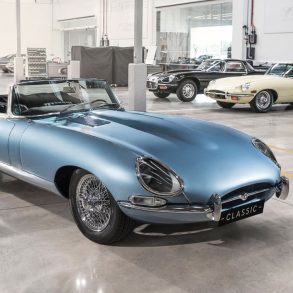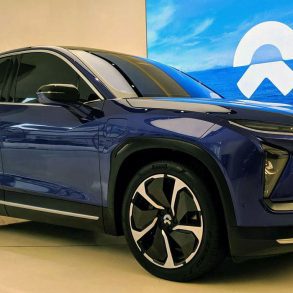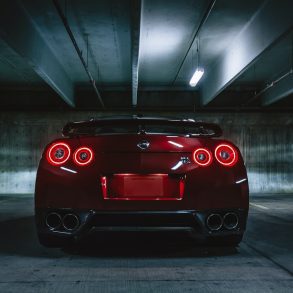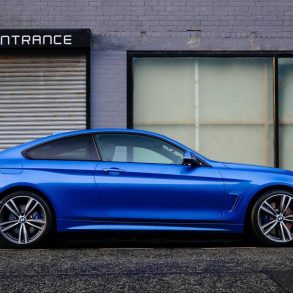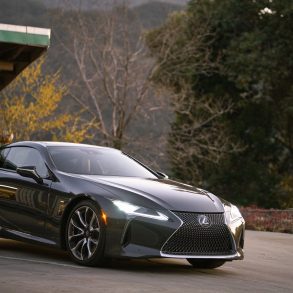After showing you that the first car built by Chery was a first-gen Seat Toledo for which the Wuhu government bought the rights and production line without knowledge of Volkswagen management and without a license to produce cars from the Chinese government, we’ll continue with part 2 of our series of cars which continued production in China under a new owner and new brand after they retired in their original market. We’ll start with one more SAIC product, one that had already been briefly mentioned in the first article. And that’s also one of the reasons why I included it here (also because I just liked the story), even though it doesn’t really belong here because it didn’t change owner after retirement in Europe and the US.
Volkswagen Jetta II (1984-1992) -> Volkswagen Jetta (1995-2013)
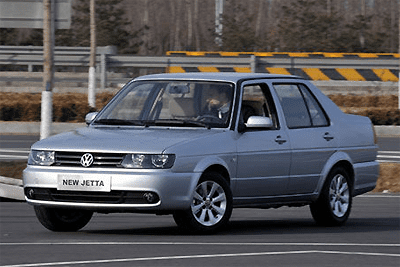 Volkswagen has been the most successful foreign car brand in China, thanks to being one of the first players in the market, as early as 1978. And in 1984, Volkswagen beat Peugeot-Citroën in to set up the first passenger-car production Joint Venture in China when it closed a deal with SAIC (Shanghai Automotive Industry Corp.) to assemble Santana sedans, a model that would continue uninterrupted production for 30 years. A few years later, in 1990, VW started a second Joint Venture in China, this time with the oldest local car maker FAW (First Auto Works). Because of plunging gasoline prices in North America in the 1980s, US demand for the Volkswagen Rabbit (Golf), Rabbit pick-up and Jetta had decreased sharply. As a result, Volkswagen’s Westmoreland Assembly Plant near Pittsburgh, Pennsylvania was operating way below capacity and a huge loss-maker for the company. The plant was shut down in 1988, and VW subsequently moved the production line to Changchun, China and started production of the Jetta at the end of 1991. The Jetta became famous in China for its bullet-proof durability, helped by the proven 1.6 liter 8-valve engine that would power every Chinese Jetta until 2013. After 21,5 years of Chinese production (29 years since its original launch) and three exterior facelifts the Jetta II was finally replaced by an all-new China-only version that year.
Volkswagen has been the most successful foreign car brand in China, thanks to being one of the first players in the market, as early as 1978. And in 1984, Volkswagen beat Peugeot-Citroën in to set up the first passenger-car production Joint Venture in China when it closed a deal with SAIC (Shanghai Automotive Industry Corp.) to assemble Santana sedans, a model that would continue uninterrupted production for 30 years. A few years later, in 1990, VW started a second Joint Venture in China, this time with the oldest local car maker FAW (First Auto Works). Because of plunging gasoline prices in North America in the 1980s, US demand for the Volkswagen Rabbit (Golf), Rabbit pick-up and Jetta had decreased sharply. As a result, Volkswagen’s Westmoreland Assembly Plant near Pittsburgh, Pennsylvania was operating way below capacity and a huge loss-maker for the company. The plant was shut down in 1988, and VW subsequently moved the production line to Changchun, China and started production of the Jetta at the end of 1991. The Jetta became famous in China for its bullet-proof durability, helped by the proven 1.6 liter 8-valve engine that would power every Chinese Jetta until 2013. After 21,5 years of Chinese production (29 years since its original launch) and three exterior facelifts the Jetta II was finally replaced by an all-new China-only version that year.
Audi 100 C3 (1982-1991) -> FAW Hongqi Mingshi / Century Star (1995-2006)
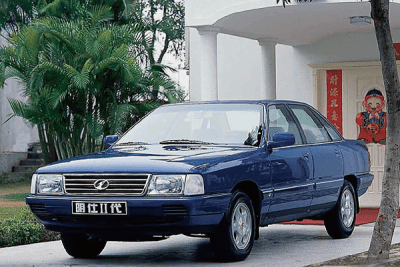 Thanks to Volkswagen’s early presence in China, Audi had quickly become the car of choice for members of Chinese Communist Party. However, in 1990, the Politburo of the Party decided that import cars were no longer allowed for government officials, creating a need for a domestic luxury car. FAW’s Hongqi (Red Flag) brand had covered this market from 1958 to 1980 and FAW wanted to get back into that market. So the company pitched an idea to its partner Volkswagen: we’ll produce the Audi 100 for you here in China, and you let us use the design of that car to develop a car under the Hongqi brand. In 1995, during Chancellor Helmut Kohl’s visit to China, an agreement between FAW, VW and Audi was signed. FAW launched the Hongqi Red Flag CA7200/CA7220, which used the platform and the design of the Audi 100 but had a Chrysler 4-cylinder engine.
Thanks to Volkswagen’s early presence in China, Audi had quickly become the car of choice for members of Chinese Communist Party. However, in 1990, the Politburo of the Party decided that import cars were no longer allowed for government officials, creating a need for a domestic luxury car. FAW’s Hongqi (Red Flag) brand had covered this market from 1958 to 1980 and FAW wanted to get back into that market. So the company pitched an idea to its partner Volkswagen: we’ll produce the Audi 100 for you here in China, and you let us use the design of that car to develop a car under the Hongqi brand. In 1995, during Chancellor Helmut Kohl’s visit to China, an agreement between FAW, VW and Audi was signed. FAW launched the Hongqi Red Flag CA7200/CA7220, which used the platform and the design of the Audi 100 but had a Chrysler 4-cylinder engine. 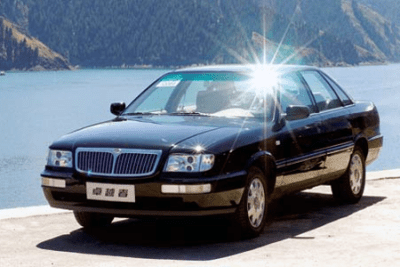 From 1995 to 2000 they made a number of different versions, all based on the Audi 100, some with the Chrysler engine, others with Audi 4, 5 or 6-cylinder engines. Meanwhile, the FAW-Audi 100 continued the Party’s preference for Audi models, as it offered a higher-class image than the Hongqi brand, which was considered to be exactly what it was: a Chinese copycat. In 2000 Hongqi changed to a Volkswagen 1.8 liter engine and named that model the CA7180A2E/A3E Mingshi Luxury Sedan. The brand also offered a more luxurious version with a Nissan 2.0 V6 engine and a a somewhat more original design named the CA7202E3 Century Star. These models would be produced until 2006 when they were replaced by a model based on the Toyota Crown Majesta. No more than a few thousand have been produced, and Hongqi even made a stretched station wagon, a 4-door convertible and a 4-door pick-up based on the Audi 100, but production numbers for these versions won’t have hit three figures. Check out these Hongqi-Audi models on the road in China.
From 1995 to 2000 they made a number of different versions, all based on the Audi 100, some with the Chrysler engine, others with Audi 4, 5 or 6-cylinder engines. Meanwhile, the FAW-Audi 100 continued the Party’s preference for Audi models, as it offered a higher-class image than the Hongqi brand, which was considered to be exactly what it was: a Chinese copycat. In 2000 Hongqi changed to a Volkswagen 1.8 liter engine and named that model the CA7180A2E/A3E Mingshi Luxury Sedan. The brand also offered a more luxurious version with a Nissan 2.0 V6 engine and a a somewhat more original design named the CA7202E3 Century Star. These models would be produced until 2006 when they were replaced by a model based on the Toyota Crown Majesta. No more than a few thousand have been produced, and Hongqi even made a stretched station wagon, a 4-door convertible and a 4-door pick-up based on the Audi 100, but production numbers for these versions won’t have hit three figures. Check out these Hongqi-Audi models on the road in China.
Daihatsu Move 2nd gen (1999-2002) -> FAW Xinfu (2003-2008)
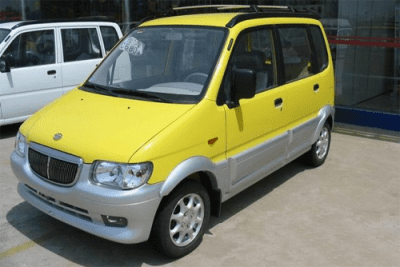 Besides with Volkswagen, FAW also has a production Joint Venture with Toyota in the city of Tianjin, where it still produces the 3rd generation Daihatsu Charade (1987-1993) as the Tianjin Xiali since 1988. However, although it’s impressive that this model is still in production after almost 30 years, it doesn’t belong in this list as it already started Chinese production when the Japanese version was still produced as well. More modern FAW vehicles based on current or recent Toyota vehicles are the Xiali Vizi (2002-2012), a first-gen Toyota Yaris, the Xiali Vela (2004-2012), a Toyota Echo / Yaris sedan, and the FAW Xenia, a Daihatsu Xenia/Toyota Avanza. Besides these models, FAW Tianjin also made a vehicle that actually does belong in this list: the FAW Xinfu. The Xinfu (literally translated: Happy Messenger) is a second generation Daihatsu Move kei car, which was produced by FAW-Tianjin’s subsidiary Huali under license from Daihatsu after it ended production in Japan. The Huali sub-brand was later renamed FAW-Jiaxing, to the city in which the factory is located. Less than 20.000 have been produced and sold in China.
Besides with Volkswagen, FAW also has a production Joint Venture with Toyota in the city of Tianjin, where it still produces the 3rd generation Daihatsu Charade (1987-1993) as the Tianjin Xiali since 1988. However, although it’s impressive that this model is still in production after almost 30 years, it doesn’t belong in this list as it already started Chinese production when the Japanese version was still produced as well. More modern FAW vehicles based on current or recent Toyota vehicles are the Xiali Vizi (2002-2012), a first-gen Toyota Yaris, the Xiali Vela (2004-2012), a Toyota Echo / Yaris sedan, and the FAW Xenia, a Daihatsu Xenia/Toyota Avanza. Besides these models, FAW Tianjin also made a vehicle that actually does belong in this list: the FAW Xinfu. The Xinfu (literally translated: Happy Messenger) is a second generation Daihatsu Move kei car, which was produced by FAW-Tianjin’s subsidiary Huali under license from Daihatsu after it ended production in Japan. The Huali sub-brand was later renamed FAW-Jiaxing, to the city in which the factory is located. Less than 20.000 have been produced and sold in China.
Austin Montego/Maestro (1983-1995) -> Etsong -> FAW -> All current Yema cars (2012-present)
The MG TF and ZT are not the first former British Motor Company models that were produced in China after their retirement in the UK.The Austin Maestro and Montego also continued their life in China, and their platform is actually still alive and kicking today. But they took an intriguing detour to get where they are now.
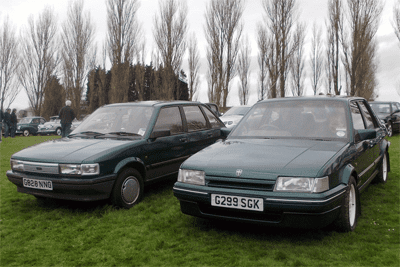 Development of the Maestro and Montego started as far back as 1977, as British Leyland went through a modernization of its factories during that period. When the models finally hit the market in 1983 (Maestro) and 1984 (Montego), they suffered from the infamous terrible build quality that plagued many BL products before them. This hurt their popularity and they never really could compete with offerings from Ford, Vauxhall and Voklswagen. The Maestro was a five-door hatchback and later also a two-door van, the Montego was a four-door sedan and later also a station wagon. In 1987, after the struggling BL was sold to British Aerospace, the Austin brand was phased out and he two models now fell under the Rover brand, but they never wore the Rover badge or name. Sporty version were sold with under the MG brand. After the Rover 200 Mk II was launched in 1989, the Maestro became the budget model of the brand. This was too late to reverse fortunes for the models, and production of the Montego ended in 1993, although small-scale production from CKD kits continued. That same year, production of the Maestro had dipped to just over 7.000 units.
Development of the Maestro and Montego started as far back as 1977, as British Leyland went through a modernization of its factories during that period. When the models finally hit the market in 1983 (Maestro) and 1984 (Montego), they suffered from the infamous terrible build quality that plagued many BL products before them. This hurt their popularity and they never really could compete with offerings from Ford, Vauxhall and Voklswagen. The Maestro was a five-door hatchback and later also a two-door van, the Montego was a four-door sedan and later also a station wagon. In 1987, after the struggling BL was sold to British Aerospace, the Austin brand was phased out and he two models now fell under the Rover brand, but they never wore the Rover badge or name. Sporty version were sold with under the MG brand. After the Rover 200 Mk II was launched in 1989, the Maestro became the budget model of the brand. This was too late to reverse fortunes for the models, and production of the Montego ended in 1993, although small-scale production from CKD kits continued. That same year, production of the Maestro had dipped to just over 7.000 units.
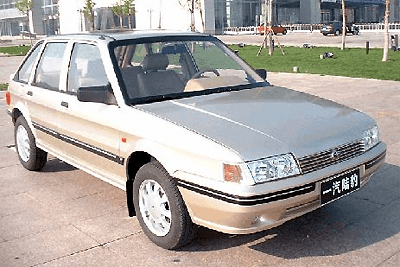 After BMW had bought Rover from BAe in 1994, chairman Bernd Pischetsrieder was actually surprised when he found out that the Maestro and Montego were still in production in Oxford (the factory where now production of the Mini takes place), having assumed the models were part of BL’s forgettable past. Of course, the Germans quickly shut down the production lines. They then struck a deal with Bulgarian company Daru Group to build Maestro’s in the town of Varna from CKD kits. However, by that time there were more modern and affordable alternatives available even in Eastern Europe (hello, Skoda Felicia!) and the red tape in the former socialist state didn’t help either, so production ended after just 8 months (from September 1995 to April 1996) and 2.200 produced cars. A number of unsold completed cars at the factory in Bulgaria were sold to British car dealer Apple 2000, who sold them in the UK after converting them to right-hand drive (RHD), although they didn’t change the mirrors and windscreen wipers to account for RHD in most of them. The production line was also returned to the UK and sold to another car dealer, Parkway Services in Ledbury, together with 621 unfinished cars. Parkway finished the assembly of those cars and also converted them to RHD, although there weren’t enough parts remaining to do that job on all cars, so there are rumors that some were converted using scrapyard parts. The last brand new Maestro was registered in the UK in 2001. Subsequently, Parkway sold the tooling for the production to Chinese company Etsong, an important Chinese tobacco company, which also had an industrial division, a large construction company, a travel agency, and a football club, and who wanted to get into the car business.
After BMW had bought Rover from BAe in 1994, chairman Bernd Pischetsrieder was actually surprised when he found out that the Maestro and Montego were still in production in Oxford (the factory where now production of the Mini takes place), having assumed the models were part of BL’s forgettable past. Of course, the Germans quickly shut down the production lines. They then struck a deal with Bulgarian company Daru Group to build Maestro’s in the town of Varna from CKD kits. However, by that time there were more modern and affordable alternatives available even in Eastern Europe (hello, Skoda Felicia!) and the red tape in the former socialist state didn’t help either, so production ended after just 8 months (from September 1995 to April 1996) and 2.200 produced cars. A number of unsold completed cars at the factory in Bulgaria were sold to British car dealer Apple 2000, who sold them in the UK after converting them to right-hand drive (RHD), although they didn’t change the mirrors and windscreen wipers to account for RHD in most of them. The production line was also returned to the UK and sold to another car dealer, Parkway Services in Ledbury, together with 621 unfinished cars. Parkway finished the assembly of those cars and also converted them to RHD, although there weren’t enough parts remaining to do that job on all cars, so there are rumors that some were converted using scrapyard parts. The last brand new Maestro was registered in the UK in 2001. Subsequently, Parkway sold the tooling for the production to Chinese company Etsong, an important Chinese tobacco company, which also had an industrial division, a large construction company, a travel agency, and a football club, and who wanted to get into the car business.
A few years earlier, MG Rover’s new owner BMW had been looking to sell off as much of the intellectual property rights it had gotten its hands off, and this included the Austin Maestro platform, which they sold in 1998 to… Etsong! Etsong now had the production rights and the tooling to produce the cars and in 2000 it started production of the Maestro hatchback with a front-end of the Montego (named Lubao QE6400 Ruby) and the Maestro van (named Lubao QE6440 Laird) with Toyota engines and Nissan dashboards. However, Etsong didn’t have a license to produce passenger cars (a similar problem that Chery faced in part 1 of this series, but which didn’t stop them either), so the cars were classified as a bus. Sales and therefore roduction remained slow and in 2003 Etsong gave up trying to produce and sell cars and sold their car-making operations to FAW (and later the factory to SAIC, who now builds Wuling minivans there). FAW kept the cars in production and sold them as the FAW Lubao CA 6410 (hatchback) and the Jiefang CA 6440 (van), but wasn’t really interested in the 25-year old cars. In 2008, when FAW started to 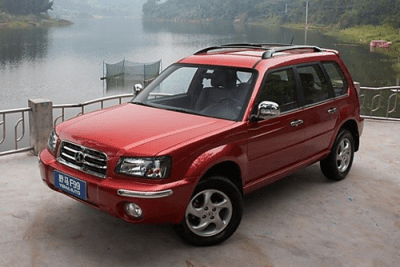 modernize its line-up, it sold the production line and rights to Sichuan Auto Industry Group Company Ltd., a coach builder in Chengdu. Sichuan had also marketed cars under the Yema brand (English translation: wild horse, or mustang) since 2002 and briefly continued sales of the Maestro van as the Yema SQJ 6450. They then went on to develop a new range of models on that same platform, which is still in use today. They started off in 2012 with the Yema F99 (an obvious copy of the 2nd generation Subaru Forester with a shortened rear-end), the Yema F10 (similar, but with an Audi-like Single Frame Grille) and the Yema F12 (similar, but with the front-end of a 3rd generation Kia Sportage)and continued with the Yema F16 in 2014, which is a more original design, but still built on the same 2.515mm wheelbase Austin Maestro platform.
modernize its line-up, it sold the production line and rights to Sichuan Auto Industry Group Company Ltd., a coach builder in Chengdu. Sichuan had also marketed cars under the Yema brand (English translation: wild horse, or mustang) since 2002 and briefly continued sales of the Maestro van as the Yema SQJ 6450. They then went on to develop a new range of models on that same platform, which is still in use today. They started off in 2012 with the Yema F99 (an obvious copy of the 2nd generation Subaru Forester with a shortened rear-end), the Yema F10 (similar, but with an Audi-like Single Frame Grille) and the Yema F12 (similar, but with the front-end of a 3rd generation Kia Sportage)and continued with the Yema F16 in 2014, which is a more original design, but still built on the same 2.515mm wheelbase Austin Maestro platform.
This was part 2, continue with part 3 about the Suzuki Alto, Daihatsu Terios, Fiat Palio/Siena, Fiat Multipla and Lancia Lybra and part 4 about the Jeep Cherokee, Nissan X-Trail, Hyundai Santa Fe, Mitsubishi Pajero and Pajero Pinin, and the Saab 9-3.


